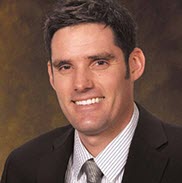Many physicians today prescribe patients with back pain overly aggressive treatments like narcotic medications and surgery. There are however, less-extreme and oftentimes equally effective treatments. All-natural, non-invasive spine treatments can provide pain relief and healing.
Back pain is one of the most common reasons for going to the doctor and a leading cause of work-loss days. Back and neck pain can be caused by strained muscles, poor posture, excess weight, or damage to spinal discs or nerves. Patients can suffer from numbness, tingling, pain, weakness and balance problems, affecting their overall quality of life.
Non-surgical, all-natural spine treatments
Natural spine treatments are treatments that help the body to heal naturally and decrease pain symptoms without surgery, injections, drugs or medications.
Regenerative medicine and laser therapy
Regenerative medicine describes treatments that address the source of pain by repairing damaged tissues and cells. One example is laser therapy which is commonly used to treat arthritis, pinched nerves, and back pain related to sciatica. It works by stimulating the damaged cells and inflammation, promoting healing, healthy cell growth, and reduces swelling.
You might be wondering, ‘How does it work’? The light from the laser penetrates the skin to the point where the chronic pain exists. The light interacts with light-sensitive components of the cells, stimulating the cells and essentially charging them with usable energy. This input of energy helps to normalize the damaged tissue and increase intracellular metabolism. The result is the creation of healthy cells, reduced inflammation, and less pain.
Laser therapy typically occurs in short sessions either as a single treatment or a series. The length of the treatment will vary based on the patient’s specific concerns. The treatment itself is painless. The patients experience either no sensation or a slight warming of the treated area.
Massage
Massage can help with back pain by increasing blood flow and decreasing muscle tension. It’s an accepted form of treatment for back pain that’s non-invasive and low-risk. It’s often used in combination with other therapies such as chiropractic care.
Experienced massage therapists can typically help assess the root causes of back pain and recommend exercises or adjustments in posture that can help with the pain. They also may be able to recommend whether to see a doctor if the pain is chronic or if there is an injury that needs medical attention.
Massage works by manipulation the back muscles which encourages blood flow. Increased blood flow promotes healing, especially with soft tissue injury. Manipulation also decreases muscle tension, allowing muscles to relax which is associated with decreased pain and increased flexibility.
Chiropractic care
Chiropractic care focuses on spinal manipulation and spine alignment to relieve neck and back pain. Realigning the spine can sometimes alleviate pressure or muscle tension associated with pain, as well as reduce inflammation.
Chiropractic care works by applying forceful pressure to key parts of the back or other parts of the body, such as the hips, in order to realign the spine. The chiropractor applies the pressure manually. The pressure may be abrupt and is often accompanied by other treatments such as massage or electrical muscle stimulation.
Exercise Therapy
Exercise and other physical therapies can be helpful for certain types of back pain. They can improve flexibility and muscle tone, which can relieve tension and pain. What type of exercise to do depends on the cause of the back pain. If the pain is due to injury, then a specialist or doctor should be consulted in regard to the type of physical activity that would be appropriate. Yoga and Tai Chi are both gentle physical practices that are also commonly used therapeutically.
What causes back pain?
The back is a complicated structure with bones, joints, ligaments and muscles all working together. An injury to any one of those moving parts can lead to mild, severe and even chronic back or neck pain. While sports injuries and accidents often lead to back pain, it’s also possible to experience pain caused by routine movements, bad posture or obesity. Pain can occur or as a side effect of another disease or disorder such as diabetes, arthritis or cancer.
Spine problems can cause a variety of symptoms beyond pain as well including nerve pain, numbness, burning, electric-shock type pain, balance problems (disequilibrium), tingling in the hands and feet and difficulty sleeping. Discovering the injury that’s causing your pain is oftentimes the first step to recovery.
Herniated, bulging or damaged discs
Spinal disc problems are a common cause of back pain. These problems can range from a herniated disc, bulging disc, slipped disc or degenerative disc. Spinal discs are located within the vertebrae of the spine. They are rubbery and contain a softer center composed of a jelly-like substance. Pain occurs when this softer center is pushed out, irritating the spinal nerves and causing pain, weakness and numbness in the limbs. Typically, damaged discs cause lower back pain where the disc herniation most commonly occurs; but, it can also be experienced in the neck.
Neuropathy
Neuropathy is a group of disorders that is initially caused by damage to the peripheral nervous system (the nervous system excluding the brain and spinal cord). It often creates painful sensations described as tingling, burning and prickling. It can cause leg cramping or pain with walking, balance problems or electric-like pain. Neuropathy commonly occurs in patients with diabetes or people who have undergone certain cancer treatments, such as chemotherapy. It can also be a result of a traumatic injury, infection, metabolic disorders, or toxins.
Sciatica
Sciatic refers to lower back pain that affects the sciatic nerve as a result of underlying conditions such as herniated discs, degenerative disc disease or spinal stenosis. Sciatica is very common as the sciatic nerve is the single largest nerve in our bodies, spanning from the lower back into the lower limbs. Pain is often described as aching in the lower back, leg and buttocks. Pain can increase when sitting and impair movement. Pain can travel down the leg, reaching the toes and foot.








